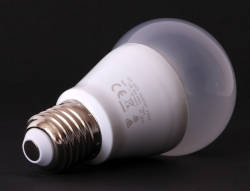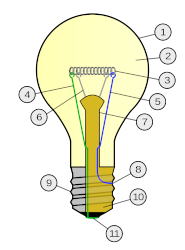Incandescent Electric Light System


The incandescent lamp was developed in the 19th century, but after many prototypes and one-offs, Thomas Alva Edison invented an improved and, above all, mass-produced his version in 1880. Incandescent bulbs had been available for purchase since the 1890s, but electrification started very slowly. Electricity is needed to run light bulbs, but the incandescent bulbs were the first serious consumers that triggered the development of an electricity grid. Show caves were among the first adopters of the new technology at this time. Due to their location, often far away from the next village, they were dependent on their own generators anyway. Therefore, they did not postpone electrification until a grid was established. The technology was popularized by the World Fair or by spectacular pioneers such as Café Bauer in Berlin. The first cave lights were not only used for illumination, many visitors came to admire the electric lighting.
But the system turned out to be extremely viable and durable. Caves were lit very successfully with incandescent bulbs for 120 years, until eventually environmental laws stopped the sale and manufacture of low energy efficiency lamps. So today there are probably only a few caves left that still use incandescent lamps. Many caves still use the same installations, but the incandescent bulbs have now been replaced by identical light fixtures in various other technologies. In general, it can be assumed that a wide variety of light sources have been used for many decades. Normal light bulbs have been supplemented by halogen lamps, fluorescent lamps and special gas discharge lamps. And in the last years, LED lamps replaced incandescent lamps.
What all those systems have in common is the mains electric power voltage, which is typically 230 V in Europe or 110 V in the U.S.A. This voltage is dangerous for humans, and it requires rather thick wires, which are expensive. We called this kind of light system Incandescent Electric Light System, but another term could be Mains Electric Power Light System. The reason is simply that all light fittings are designed to work with the usual mains voltage.
LED technology is very different from all other types of lamps: They require 5 V direct current. The solution to operating them with mains voltage is that each light bulb has its own built-in power supply unit. This is expensive, requires a lot of energy in production, produces a lot of waste, is inefficient due to its limited size, and the power supply ages quickly and fails. In other words, to utilise the full power of the LED, a different voltage with a central power supply unit makes much more sense. For this reason, we still classify these lighting systems in caves as Incandescent Electric Light System, even if they use LED bulbs.
 Search DuckDuckGo for "Incandescent Electric Light System"
Search DuckDuckGo for "Incandescent Electric Light System" Incandescent light bulb - Wikipedia (visited: 24-APR-2021)
Incandescent light bulb - Wikipedia (visited: 24-APR-2021)
 Index
Index Topics
Topics Hierarchical
Hierarchical Countries
Countries Maps
Maps